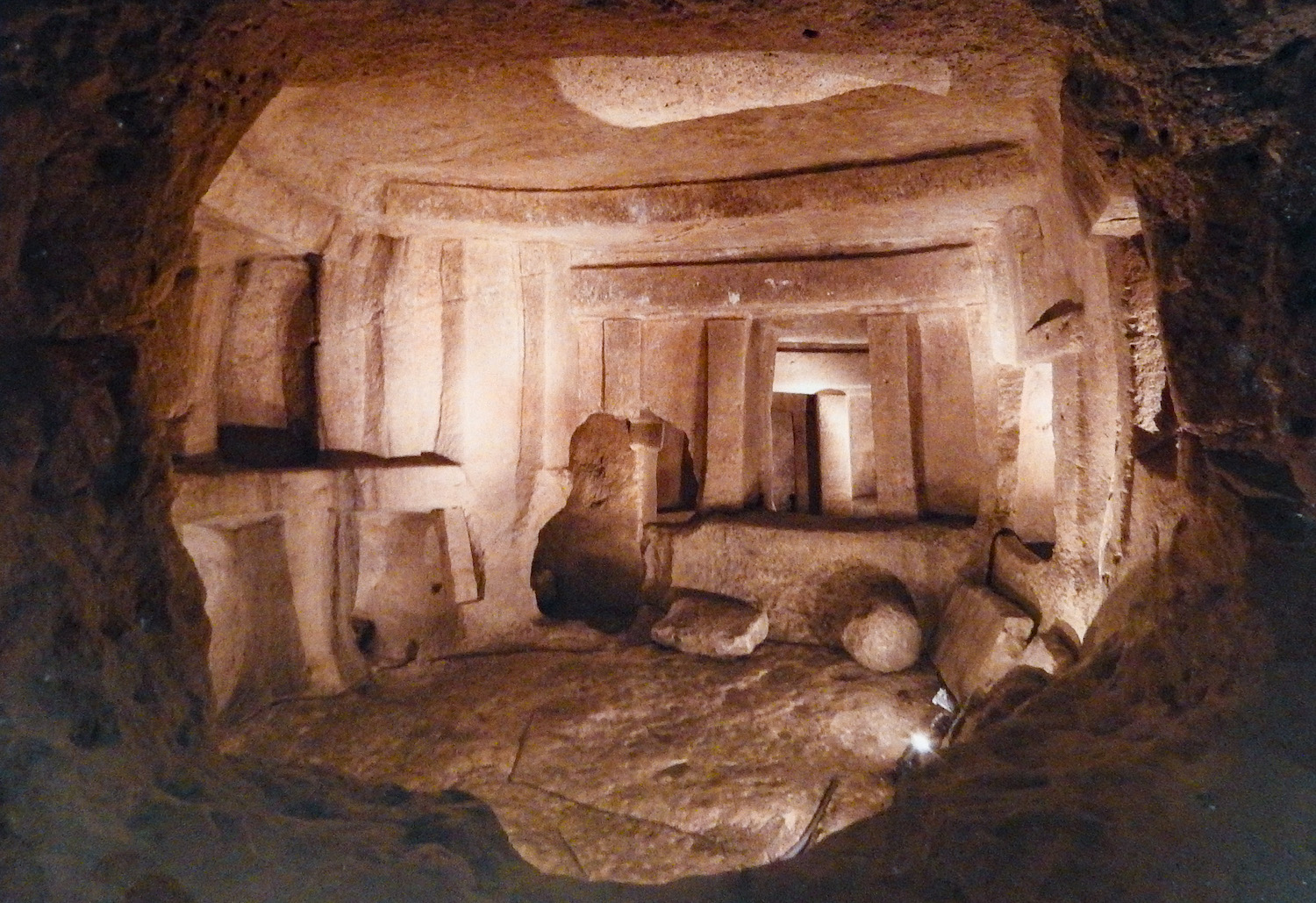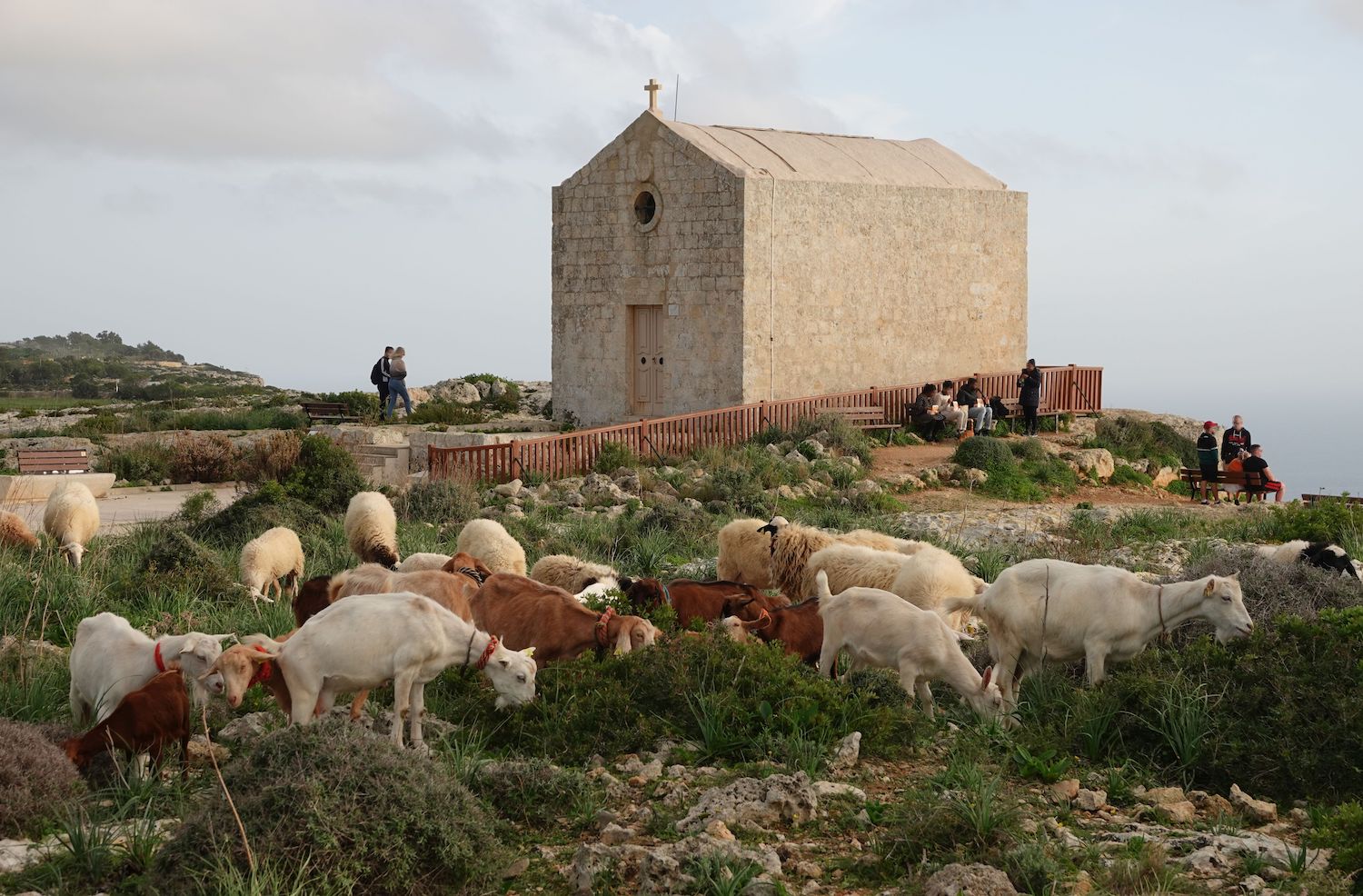Rising 253 metres above the Mediterranean Sea, the Dingli Cliffs on the western edge of Malta are not just the island’s highest point but also a place to walk, meditate and watch the sunset. But perhaps the most intriguing reason to visit the area is the mysterious array of cart ruts carved into the limestone.
These parallel grooves have a constant width of 1.4 metres and depths of 10 to 60 centimetres, and sprawl pell-mell in all directions. Officially located in a prehistoric site called Misraħ Għar Il-Kbir, the cart ruts are also known as Clapham Junction, so named by a humourous Englishman for its resemblance to the eponymous busy London railway station.
For years I have wondered about the precision of the ruts, running in parallel lines with perfectly cut channels heading into the sea. The mystery of the cart ruts has puzzled many others too, leaving more questions than answers.

A Malta Mystery
The panoramic Mediterranean Sea views from the Dingli Cliffs are indeed mesmerising, but it’s the cart ruts that have puzzled historians, archaeologists and amateur theorists for centuries. Their widespread presence suggests they were an integral part of prehistoric island life though their exact function and purpose is an enigma.
How were they hewn most accurately with the limited equipment at the time and the limited knowledge of the use of metals? Why do they veer in some places? Above all, what was their use? Were they a form of transport? Were they used for the conveyance of materials? Did wheels or sledges fit the rut gauges?
In terms of world history, the Maltese Islands have an archaeological, heritage and geographic importance spanning more than 7,000 years. Neolithic developments such as the stone temples at Hagar Qim, Mnajdra and Ggantija as well as the underground burial crypt Hypogeum, have led many to conclude that the human beings responsible for these developments had intelligence far superior to populations elsewhere.

Three shaft-and-chamber Punic tombs were found in the area, one of which is above a pair of cart ruts, suggesting that the grooves were created before the tomb.
The age, purpose and use of the cart ruts are a source of debate and one presumption is that the “Clapham Junction” site developed in 2000 BC after new settlers came from Sicily to start the Bronze Age in The Maltese Islands.
It’s been widely accepted that Malta’s cart ruts were manmade. The most plausible theory is that they were used for the transport of materials on sledges with tracks gauged into the rocks. Other suggestions are that they were irrigation channels or alignments for astronomical observations. More far-fetched ideas sprout too, including that these ruts were created by aliens or alien spacecraft.
What does one make of all this? Who knows!
It’s all part of the great Malta mystery and the truth is carved deep into Malta’s soil, making a visit even more intriguing.

Visiting Malta’s Dingli Cliffs
Stand on the cliffs to take in the views of the uninhabited island of Filfla, five miles off the mainland. It is a protected nature reserve and a popular dive spot (with permission from the Ministry of the Environment).
Perched on the edge of the Dingli Cliffs is St Mary Magdalene, a small Roman Catholic chapel nearly 400 years old. Also known as il-Kappella tal-Irdum (the chapel on the cliffs), it was built for local farmers and their families and is a testament to Malta’s deep-rooted religious traditions.
Bring your walking shoes and up your step count along Triq Panoramika Road, a 3-kilometre path whose name means “Panoramic Road” in Maltese and lives up to the moniker.
Dingli Village, with a population of 3,326, is about a 15-minute walk from the cliffs. While in the area, visit Buskett Gardens, one of the greenest areas in Malta, with myriad types of trees, bushes and flowers.
Verdala Palace has been the official summer residence of the President of Malta since 1987. Built in 1586 by Grandmaster Hughes Loubenx De Verdalle, the palace is surrounded by Buskett Gardens.

The Cliffs Interpretation Centre, located within the original historical TACAN building built in the 1960s by the British Royal Air Force, offers guided nature walks and dining experiences.
Għar il-Kbir, a complex of eight caves, sits very close to Dingli Cliffs. It’s still unknown when the first human settlement occurred, but there is plenty of evidence to suggest human habitation in this cave complex.
***
BeSeeingYou In: Malta
Good To Know: A taxi from Valletta to Dingli takes less than 30 minutes
WOW! Factor: Prehistory, mystery, and sunsets!
Tip: Dingli Cliffs are beautiful in winter when you can watch big waves on windy days, with fewer visitors around
***
Author bio: Albert Fenech
e/mail – salina46@gmail.com.mt
Find more travel inspiration at BeSeeingYou









